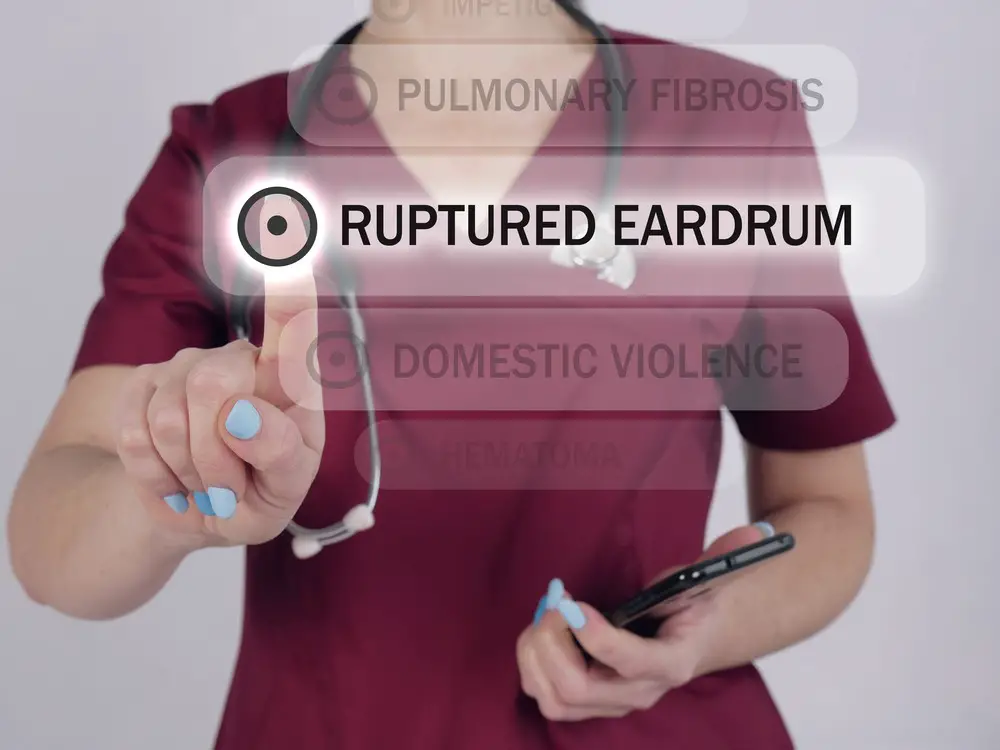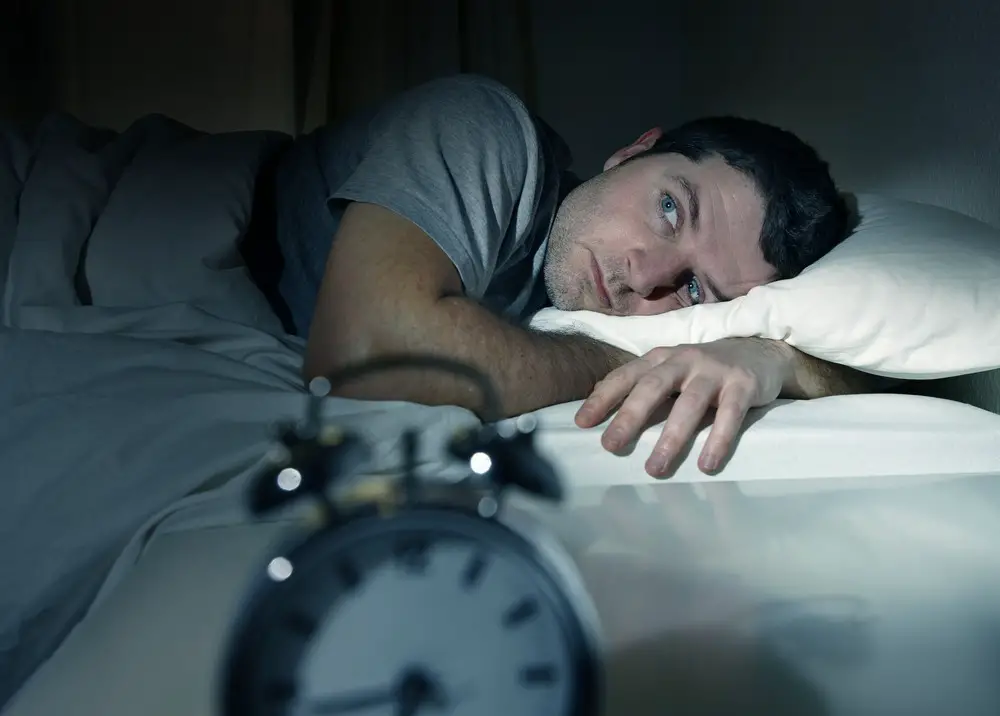A ruptured eardrum can cause discomfort and disrupt daily life, especially when sleeping. As one of the most crucial periods for the body to rest and recover, sleep plays a pivotal role in healing. Therefore, it’s important to understand the best practices for sleeping with a ruptured eardrum, as the position can significantly impact healing and affect your comfort level throughout the night.
Understanding the potential complications and the recommended sleeping position can make a big difference in managing pain and discomfort while ensuring proper healing. Additionally, being aware of activities to avoid and seeking appropriate medical attention will contribute to a smoother recovery process for those with a ruptured eardrum.
Key Takeaways
- Optimal sleep position aids the healing process and reduces discomfort while sleeping with a ruptured eardrum.
- Recognizing potential complications is essential in managing pain and discomfort.
- Ensuring proper medical attention and following recommended guidelines contribute to effective healing and recovery.
Understanding Ruptured Eardrum
A ruptured eardrum, known as tympanic membrane perforation, can be a painful and disorienting experience. This delicate membrane, responsible for transmitting sound vibrations, can become damaged due to various causes, including head trauma and infections. Understanding the symptoms and causes of a ruptured eardrum can help you decide your sleep position.
Firstly, it’s important to know the symptoms of a ruptured eardrum. These may include sharp pain, ringing or buzzing in the ear (tinnitus), hearing loss, dizziness, and fluid drainage from the affected ear. If you experience any of these symptoms, it’s crucial to consult a healthcare professional for accurate diagnosis and appropriate treatment.
The causes of a ruptured eardrum vary widely. Head trauma, such as a blow to the ear or a sudden change in air pressure, can lead to damage. Infections can also play a significant role, as the buildup of pus and pressure from a severe ear infection can weaken and eventually rupture the eardrum. Other common causes include loud noises, foreign objects inserted into the ear, and rapid altitude changes.
When dealing with a ruptured eardrum, choosing the correct side to sleep on can promote healing and prevent further complications. Generally, sleeping on the side with the unaffected ear is recommended to prevent further fluid buildup and pressure on the injured side.
In summary, awareness of the symptoms and causes of a ruptured eardrum can help you make informed decisions about your sleep position. Taking the necessary precautions and consulting with a medical professional can ensure proper healing and avoid worsening the condition.
Potential Complications
Ruptured eardrums can be quite the pain in the neck, but it’s important to consider the potential complications that may arise in your quest for a good night’s sleep. One major concern is the increased risk of ear infections. The eardrum acts as a protective barrier, separating the middle ear from bacteria and other nasty invaders. The middle ear becomes a breeding ground for infections when this barrier is compromised. This unfortunate development is often referred to as otitis or otitis media.
Let’s not beat around the bush – a ruptured eardrum and an ear infection can be quite bothersome. The pain and discomfort associated with these conditions can make sleeping difficult. Choosing the right side to sleep on is crucial to minimize the chance of worsening these issues and prolonging the healing process.
Aside from ear infections, hearing loss is another dreaded complication that could rear its ugly head. You may find this surprising, but a ruptured eardrum can sometimes lead to temporary or even permanent hearing loss, especially if the rupture affects the delicate structures of the inner ear. This is undoubtedly an unsettling thought since nobody wants their beauty sleep to result in hearing damage!
Regarding sleep, figuring out the best position for your slumber is not a walk in the park. The wrong choice could worsen your pain, aggravate your symptoms, and disrupt your sleep cycle. Considering the fine line you’ll be treading, it’s essential to be as comfortable and well-informed as possible.
A ruptured eardrum can throw quite a wrench in your life, causing complications like ear infections, pain, and hearing loss. Navigating these issues while maintaining a healthy sleep pattern can be challenging. Still, with the right precautions and a little persistence, you just might sail through this rough patch and come out the other side more resilient than ever!
Managing Pain and Discomfort
Dealing with pain and discomfort caused by a ruptured eardrum can be challenging, but fear not! There are several steps you can take to alleviate the pesky discomfort. Keep in mind that you should consult your healthcare professional for personalized advice.
First things first, let’s consider sleeping positions. For many people, resting on the side opposite the affected ear can provide some relief. By sleeping in this position, you’ll avoid putting unnecessary pressure on the damaged eardrum, potentially worsening the pain.
Over-the-counter pain medications can be a helpful ally in your battle against discomfort. Options like ibuprofen, acetaminophen, and naproxen are potentially effective choices that may help reduce inflammation and provide some relief. Be sure to follow the dosage instructions (and consult your doctor when in doubt) to ensure safe use.
A warm compress can work wonders for soothing the pain caused by a ruptured eardrum. Gently place a soft towel or washcloth soaked in warm water against the outer part of the affected ear. The warmth can help alleviate the pain, but remember not to make it too hot; you don’t want to cause more problems!
In summary, managing pain and discomfort from a ruptured eardrum involves finding the right sleeping position, using over-the-counter pain medications, and applying a warm compress. With these strategies in your arsenal, you can conquer the pain and get back to enjoying life. Just don’t forget to contact your medical professional for tailored guidance.

Recommended Sleeping Position
Dealing with a ruptured eardrum can undoubtedly be a challenging experience. Finding the most comfortable and appropriate sleeping position is essential for a swift recovery and a good night’s rest.
First and foremost, back sleeping is the way to go! Lying on the unaffected ear may cause discomfort, so sleeping on your back helps to avoid putting pressure on the injured side. This position offers the perfect balance, gently relieving pressure from the ear area while ensuring a comfortable night’s sleep.
However, merely lying flat might not be enough. It’s crucial to keep your head elevated when resting. Using an extra pillow or an adjustable bed to prop your head up at an incline will reduce any potential swelling or fluid buildup. This simple adjustment can promote drainage and expedite the recovery process.
In addition to these suggestions, you must be aware of your body and pay attention to any discomfort or changes you may experience. Sometimes, finding the perfect sleeping position might necessitate trial and error, but the crucial point is to prioritize comfort and minimize any undue strain on the affected ear.
In conclusion, maintaining a sleeping position that encompasses both back sleeping and head elevation will provide the optimal environment for your ruptured eardrum to heal. Listening to your body and adjusting to ensure restful and recuperative sleep is important. Stay confident, and allow healing to take its course most effectively and comfortably as possible.
Activities to Avoid
Various activities could exacerbate the damage and hinder the healing process in a ruptured eardrum. Consequently, it’s wise to steer clear of specific actions and situations. The list below outlines some potentially harmful activities:
- Swimming, diving, and scuba diving: A cracked eardrum is no friend to water! Swimming and diving may cause water to seep into the middle ear, bringing about infection or impeding the healing process. Scuba diving should be avoided similarly, as the rapid pressure changes worsen matters.
- Exposure to loud sounds: As if diving into a sea of pain, loud noises can aggravate an already delicate eardrum. Avoid noisy environments or wear ear protection to shield the damaged ear from further irritation.
- Air travel: Who would have thought that an eardrum in distress should shy away from the skies? Due to sudden changes in air pressure during take-off and landing, air travel may exacerbate issues with a ruptured eardrum. As the plane ascends and descends, the pressure can be unbearable for an injured ear.
One might assume that living with a ruptured eardrum means staying cooped up at home, forever tiptoeing around life’s vibrant adventures. Fear not! A temporary change in habits will eventually usher in a renewed sense of vigor once the eardrum has healed.
Take care, and consult a healthcare professional for guidance on the do’s and don’ts during recovery. Time, patience, and gentle treatment of the injured area will soon have you back on the path of exploration and excitement!
Seeking Medical Attention
It’s essential to seek medical attention if you suspect a ruptured eardrum. Don’t hesitate to schedule an appointment with your doctor; timely treatment can make all the difference. They’ll likely use an otoscope to examine your ear and determine the extent of the damage.
Remember, it’s better to be safe than sorry! Trust your instincts regarding your health. If you’re experiencing pain, discomfort, or any unusual symptoms, it’s always a good idea to consult a medical professional.
Moreover, there can be complications if a ruptured eardrum goes untreated. Infections may develop and affect your hearing permanently. So, don’t take any chances – reach your doctor and get the necessary care.
In the meantime, avoid further damage as you wait for your appointment by keeping your ear dry and safe. For instance, refrain from inserting cotton swabs or other objects into the ear canal, as it might worsen the situation. And, as tempting as it may be, resist the urge to probe or poke the affected area.
Once you’ve seen a doctor and received a proper diagnosis, follow their advice diligently and give your ear the time it needs to heal. In most cases, a ruptured eardrum heals within a few weeks. However, in more severe cases, further intervention might be required.
So, the bottom line is to stay vigilant and seek medical attention when needed. A healthy ear is vital for your overall well-being, and taking the appropriate steps can help ensure a smooth recovery. Remember, your health is in your hands – or, in this case, your ears.

Treatment and Medications
When dealing with a ruptured eardrum, taking the proper steps to ensure a swift and smooth recovery is crucial. The first order of business is addressing the underlying cause of the rupture, particularly if it’s due to a bacterial infection. In such cases, physicians usually prescribe antibiotics to combat the infection and prevent further complications. These medications could come in various forms, such as oral pills, drops, or even injections.
In addition to addressing bacterial infection, managing pain and inflammation associated with a ruptured eardrum is essential. Over-the-counter pain relievers such as ibuprofen or acetaminophen might be recommended. However, it’s important to consult with your healthcare provider before self-medicating. They may have specific recommendations or adjustments based on your unique situation.
Avoid putting undue pressure on the affected ear when it comes to sleep. Most people find it more comfortable to rest on the unaffected side, elevating their heads with extra pillows or a foam wedge to reduce swelling. If you’re unsure which side to sleep on, always consult your doctor, who can provide personalized guidance based on your circumstances.
It’s important to remember that patience and consistent care are key to navigating your recovery journey. Ruptured eardrums will typically heal on their own within a couple of weeks, but in some cases, it may take several months. Ensure you follow your doctor’s instructions closely and avoid any activities or substances that may aggravate your condition, such as exposure to loud noise or submerging your head underwater.
In conclusion, handling a ruptured eardrum requires diligence and attention to your well-being. With the right approach, treatments, and medications, you’ll be on the path to recovery in no time. Remember, contacting your healthcare provider with any concerns or questions never hurts. They are your best resource in ensuring a safe and efficient recovery.

Home Care and Follow-Up
When caring for a ruptured eardrum, several measures can help ease the healing process and make it more comfortable. First and foremost, keeping the ear clean and dry is crucial. If any discharge or drainage is present, gently wipe it away with a soft cloth or cotton swab. But remember not to insert anything deep into the ear canal, as it might aggravate the situation.
For those tempted by home remedies, it’s wise to tread with caution. While some options may provide temporary relief, it’s important to consult a healthcare professional before trying any remedy to avoid causing further damage or complications. Additionally, be extra vigilant to prevent head injuries or exposure to loud noises, as these can hinder recovery.
During the healing process, the sleeping position can make a significant difference. Sleeping on the unaffected side minimizes pressure on the injured ear and allows proper drainage. A soft pillow and a clean sleeping environment can promote comfort and expedite recovery.
Paying close attention to any changes in symptoms is essential as well. If one notices increased pain, discharge, or worsening hearing, seeking medical attention is vital. Timely follow-up appointments with a healthcare provider can ensure the healing process is right. Don’t hesitate to discuss concerns or ask questions during these visits, as they can provide valuable insights and recommendations on further care.
In conclusion, a ruptured eardrum can heal without complications through proper home care and diligent follow-up visits. Recovery can progress as smoothly as possible by watching symptoms and adapting to a suitable sleeping position.
Prevention and Precautions
When dealing with a ruptured eardrum, taking specific preventive measures and exercising caution is essential. First and foremost, avoiding head traumas is crucial, as these could worsen the condition or even cause a rupture in the first place. Accidents happen, but being mindful of your surroundings and wearing appropriate protective gear during sports or other activities may decrease the risk of injury.
Loud noises can be a significant concern for those with ruptured eardrums, leading to acute acoustic trauma. If you are in a situation with a sudden, loud noise, it’s wise to cover your ears as quickly as possible or remove yourself from the area. Noises like these can exacerbate symptoms such as vertigo and ringing in the ear, so it’s best to take precautions.
Air pressure changes can also pose a problem for people with ruptured eardrums. Barotrauma, caused by changes in altitude or pressure, could worsen ear trauma or delay healing. So, suppose you’re planning on flying or engaging in activities involving significant altitude changes, like scuba diving. In that case, consulting with a medical professional might be a good idea first.
Regarding which side to sleep on, sleeping on the side opposite the affected ear is generally recommended. This alleviates pressure on the ruptured eardrum and allows for better drainage, potentially speeding up the healing process. But remember that listening to your body and adjusting your sleeping position to minimize discomfort is crucial.
Finally, maintaining good ear hygiene is a must. Keeping your ears clean and dry reduces the risk of infection, which could complicate or prolong the healing of a ruptured eardrum. That being said, avoid using cotton swabs or other invasive objects that might push debris deeper into the ear canal.
Ultimately, giving your body the time and care it needs to recover is essential. By taking these preventive measures and adjusting, you’ll set yourself up for a smoother healing journey.
Frequently Asked Questions
- The Burnout Epidemic: Why We’re All Feeling Overwhelmed and How to Cope - February 9, 2024
- How to Live a Peaceful Life - February 9, 2024
- Useful Information You Should Know About Health Screenings - February 8, 2024
This site contains affiliate links to products. We will receive a commission for purchases made through these links.




